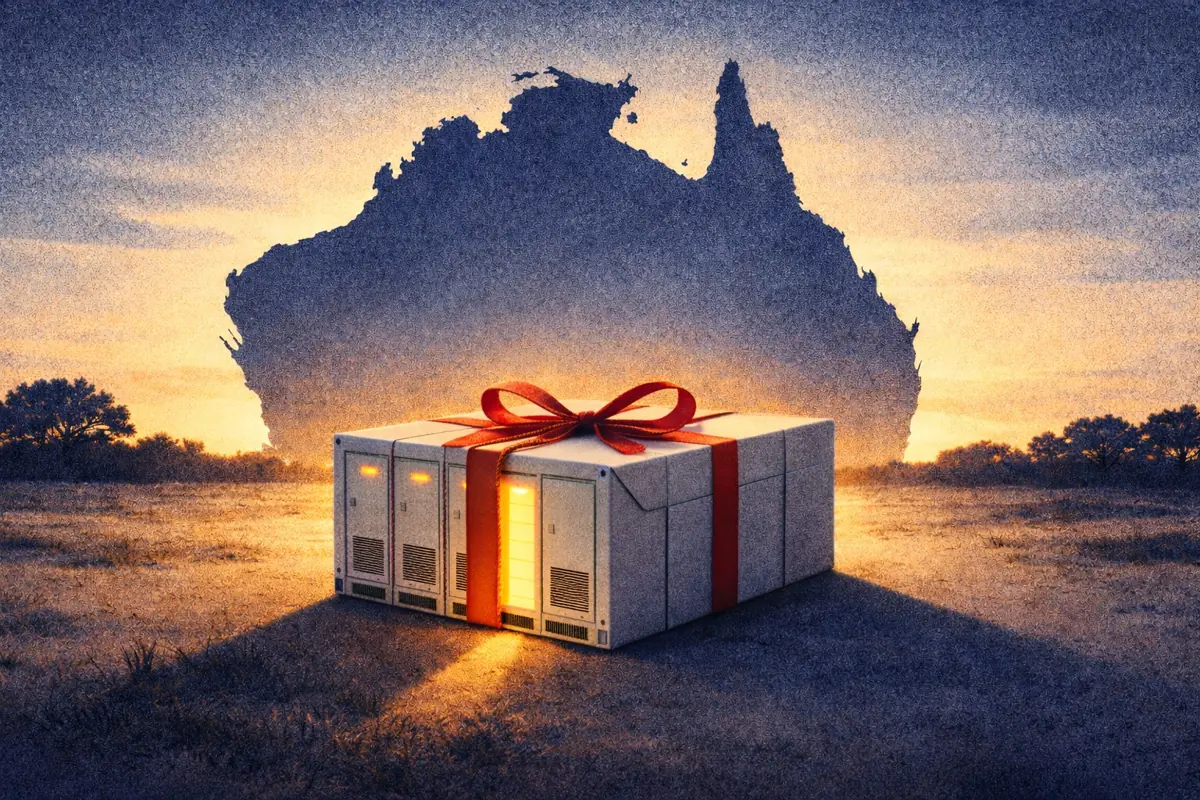The evolution of the GB battery energy storage revenue stack
Earlier this month, Modo’s Head of Research Alex Done gave a presentation at the Electrical Energy Storage event in Munich. The presentation was about the evolution of the revenue stack for battery energy storage systems (BESS) in Great Britain.

We’ve had a number of requests for the slides from Alex’s presentation to be made public. With that in mind, you can find those slides below.
GB battery energy storage at a glance
Slide 1 (below) just features some headline figures for BESS in GB.

- As of the 1st of May 2022, there’s 1,567 MW of installed BESS capacity in Great Britain.
- The average duration of BESS assets in GB is 1.1 hours. Asset durations range from around 30 mins to just over 2 hours.
- (Given the different durations of the assets across the country, this equates to 1,725 MWh.)
- In 2021, BESS assets in Great Britain made £123k/MW on average.
Evolution of the battery energy storage revenue stack
Slide 2 (below) shows the average annual BESS revenues in 2020, 2021, and 2022. It also shows which markets made up which shares of these revenues.

- For context, low-frequency Dynamic Containment (the cyan bar) came online in October 2020. We can see that it then dominated the revenue stack in 2021.
- The emergence of Dynamic Containment was also largely responsible for the massive jump in overall revenues from 2020 to 2021. We saw an increase of 89%, from £65k/MW to £123k/MW.
- In 2022 (from January to April), we can see a more even spread of revenues. This is due to the launch of the high-frequency Dynamic Containment, and the migration of battery energy storage systems back into the monthly Firm Frequency Response market.
Slide 3 (below) shows the same as above, but splits the bars into just two categories: frequency response and merchant markets.

- ‘Merchant’ here just refers to wholesale markets and the Balancing Mechanism.
- As we can see, even with the recent increased volatility in wholesale prices (more on that later), frequency response is still very much the dominant revenue stream for battery energy storage systems.
So what’s been happening on a month-by-month basis?
Slide 4 (below) shows the BESS revenue stack on a monthly basis, from January 2020 to April 2022.

- Seeing the stack on a monthly basis allows us to see patterns as they form. We can see the impacts of new markets (when they emerge), and also the overall diversification of the stack.
- We can see that FFR and EFR carried the revenue burden until October 2020. This goes back to our previous observation: this month saw the launch of Dynamic Containment.
- Dynamic Containment became the dominant revenue stream for around a year.
- In September 2021, we see the green bar forming quite a large part of the stack. This represents wholesale markets, and corresponds with the wild price spikes we saw in September.
- However, as we’ll see later, September wasn’t a complete aberration.
Let’s break this down even further
Pre-Dynamic Containment
The next three slides show some headline figures for different sections of the above graph. Slide 5 (below) looks at the period from January 2020 until September 2020 - the last month before Dynamic Containment launched.

- At this time, there was around 1 GW of installed battery energy storage capacity in GB.
- Prior to the launch of Dynamic Containment, BESS was largely reliant on EFR and FFR (weekly and monthly) for revenues. However, the estimated required capacity of these services was only around 550 MW, meaning that the market was oversaturated.
- This is why revenues at this time were considerably lower than the revenues we’re used to seeing in recent months.
Dynamic Containment dominance
Slide 6 (below) looks at the period from October 2020 (when Dynamic Containment launched) to August 2021 - the month before we really started to see more regular wholesale market price spikes.

- At this time, there was around 1,300 MW of installed BESS capacity in GB.
- With Dynamic Containment being added to the EFR and FFR services, frequency response markets were suddenly much larger. With an estimated capacity of 1,600 MW, these markets were undersaturated - particularly DC.
- Because of this, market participants were able to consistently earn high revenues in DC. The £17/MW/h price cap simply became the default price.
- This meant a huge increase in overall BESS revenues. They pretty much doubled (compared to the previous period we looked at).
Revenue diversification
Slide 7 (below) looks at the period from September 2021 (when we saw those huge wholesale prices) to April 2022. (April is the last month for which we have full monthly revenue data.)

- As shown in the first slide, there’s currently 1,567 MW of installed BESS capacity in GB.
- In November 2021, National Grid ESO revised its DC requirements. This meant that, suddenly, frequency response markets were much smaller.
- A combination of the lower DC requirements and large wholesale opportunities saw many BESS assets migrating back into the monthly FFR market. This has provided a steady revenue stream since November. (It had been a largely ignored market for the previous seven or eight months.)
- However, the ESO launched Dynamic Regulation in April (and has since launched Dynamic Moderation, too). These markets offer further revenue opportunities to battery energy storage systems, though they are smaller markets than DC and FFR.
- We’ve continued to see relatively high prices in frequency response markets, despite them being (technically) oversaturated.
What’s going on with wholesale prices?
Slide 8 (below) shows the average daily day-ahead spread for the period from January 2020 to March 2022.

- Since September, the high wholesale volatility has supported frequency response prices in the battery energy storage revenue stack.
- This has come at a good time for battery energy storage, because we have saturation in frequency response.
- While this is driven by geopolitical factors/the energy crisis, it could also show us a glimpse of the future. As we have greater renewable penetration, we’re likely to see high volatility.
Slide 8 also helps us see Slide 7 in another light. Even though frequency response services are saturated, this saturation will only start to seriously affect battery energy storage revenues if/when the wider market becomes less volatile.
As ever, if you have any questions about these slides, please don’t hesitate to get in touch with us - either via Intercom (that little blue circle in the bottom-right corner of your screen) or through LinkedIn.
As for everyone we bumped into at EES 2022 - thank you for making us feel so welcome. See you all next year!








